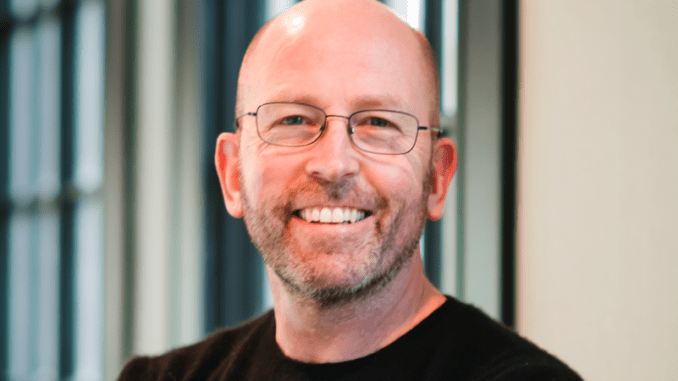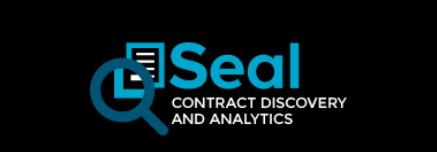
This is a Guest Post by Mark Williams (pictured above) CFO of legal AI company Seal Software. It explores how what is now one of the largest and most established legal AI pioneers got started, got funding and got growing. It was inspired by a piece in Artificial Lawyer in July about the start-up journey many new legal tech companies take. It’s also a fascinating insight into the early Seal origin story.
A CFO’s Perspective On Funding A Legal AI Company
We started Seal in 2010. At the beginning of that year, I was forty-five years old. Even though I had long admired the boldness of entrepreneurs, I had all but given up my ambitions to be part of a start-up.
‘Start-up life’ conjures up images of youthful Silicon Valley technologists. I was a three-time public company CFO, and would be far too expensive to hire for a ‘normal’ start-up. I figured that my time had passed. So, when Ulf Zetterberg (a Swede living in Barcelona) asked me (a Brit living in Paris) to help him and Kevin Gidney (a Brit living in Oslo) set up Seal, I jumped at the chance.
Almost immediately, we solved the problem of my salary: I wouldn’t get paid! With that kind of thinking, the task of building an entirely new market segment using ground-breaking machine-learning technology would be child’s play…
Seal’s first six months was funded by a handful of the early executives. Meanwhile, the company was planning to raise venture capital funding from UK-based VC firms. By early 2011, we had settled on a tier-one investor. The firm in question was US-based, and had a strong UK presence. We soon had provisional go-ahead, and were offered a term-sheet that was subject to due-diligence.

It quickly became clear to us that Seal was the future, and that Dolphin was not. The CLM space was overcrowded, with little innovation; nothing much has changed there. But at the time, Dolphin was the revenue generator. Seal was still a quarter away from its first customer, and Dolphin had several clients and real revenue.
The real issue was this: the prospective funder would not invest in pre-revenue companies, and that’s exactly what Seal was. Even though the investor loved the idea of Seal, they had to justify the investment based on Dolphin. Could we, in all conscience, take investment in one business knowing that the value lay in the other? What did this mean for our funding prospects? How were we to proceed?
So, picture the wedding scene from ‘The Graduate’ : The (admittedly slightly haggard) Dolphin-bride stands waiting at the altar, smelling quite distinctly of fish. The venture-capitalist-priest faces the congregation with a face of thunder, scowling and tapping his watch. The congregation scream blue-murder. And the reluctant groom in a Viking helmet stands outside the church, weeping profusely, downing whiskies and dreaming of seals. How does this movie end?
Suffice it to say, this particular union was annulled before it began. The payroll was looming, the bank account was empty, and we didn’t have venture capital investment. At the time it seemed like disaster, but it ended up being the best break Seal had ever had.

What happened? Mike Chalfen happened. A respected venture capitalist with experience at Apax and Advent Venture Partners, Mike was introduced by our then-Chairman.
As chance would have it, I had had a conversation with an entrepreneur only a few months earlier who had been funded by Mike. He told me that when Mike is impressed by an idea and a team, he commits wholeheartedly. Due to his willingness get out his cheque book and put his money where his mouth is, Mr Chalfen had been dubbed ‘Magic Mike’.
Needless to say, the moniker stuck. We met Mike for breakfast. We discussed the long-term vision for the company, and how we thought about reaching the end goal of becoming the dominant contract analytics vendor. He believed our vision that Seal could be the basis of a large new market. He asked us what valuation we wanted, how much money we needed, and we agreed the deal then and there. Only one condition: Dolphin had to go. Magic!
Dolphin was sold to a Canada-based SharePoint services vendor, and still exists to this day. Magic Mike Chalfen became Seal’s chairman for the next three years, and still sits on our board.
Over the next two years, Seal raised over $5m, provided by over twenty individuals investing privately – all introduced by Magic Mike. His rolodex is gold-plated; not only did these investors willingly stump up the cash, but they also brought a huge amount of relevant experience with them. Thanks to Mike, we now have a roster of serial software entrepreneurs, long-term financial industry players, and successful technology investors in our corner. Their combined knowledge and expertise is a force to be reckoned with.
After the funding was raised, we asked the question: what do we do with it? You hear many stories of start-ups being bootstrapped to success by a prophetic founder. This type of founder only recruits ardent disciples, and their combined zeal for the company blasts all obstacles out of the way. Although it makes for a good story, this method has a sell-by-date. This skill-set is useful when starting a company, but often falls short when the time comes to scale. In many instances, the founding CEO and management team are not the right people to continue the journey, and often they stand aside. Given the strong emotional attachment that any founder has with their company, this decision is never easy.
Seal was not bootstrapped. Ulf did not want to use half-measures. In the past, he co-founded a company that realised an IPO, and ran international sales for a major US software vendor. He valued experience and expertise, and wanted industry veterans from day one. He also hired for positions that start-ups don’t usually create until later in their lifecycle. (Case in point, one of his first hires was a former public company CFO – thanks, Ulf!) From day one, Seal was thinking about the long-term. This is still the case today, as our executive team is comprised of individuals who have operated and led organisations far larger than Seal.
Of course, there is a downside to this approach. The company consumes more capital and the dilution of the founders is higher. But the upsides are great: chances of success are increased, growth rate is increased, and it becomes easier to sign up those all-important first large customers and make them successful and referenceable.
At Seal, this approach has allowed us to build a software platform and a team that serves some of the largest enterprises on the planet.
( Thanks very much to Mark Williams for sharing this fascinating Seal start-up story. If you’d like to share your own start-up story in Artificial Lawyer then please get in contact. )